1st Yr BEd in LSAD | Exploring 'Movement' through rotary and circular motion.
Don't wanna be here? Send us removal request.
Text
Movement Project Sketchbook Video
youtube
11 notes
·
View notes
Text
Project Statement
'Movement' is such a general and wide term, which is probably why I had such a struggle the last 7 or so weeks planning and developing a project around it.
So, when in doubt, I decided to look at the world around me. In my primary research week, I thought back to home, to what I see in the everyday. And so, the movement of the carousel stuck in my mind.
As I went about my daily routine, the spinning carousel was something that was always there, reminding me that every time I made my loop around the house, so did it.
We spend a lot of our own lives doing the same things over and over again, starting at one point and doing a full 360 back around to that same point.
With my project, I guess I wanted to make people think about that. How it is important to know that it's the same shit, just a different day. And how that is totally and completely okay.
The carousel is a simple, moving object. We are simple, moving objects - but that doesn't necessarily mean that that's boring.
Print, painting and photography were my three chosen electives. I only thing I regret about that is that I didn't have enough time to explore them even more. I have discovered a love for my practice in these three areas, and have developed skills over the past few weeks that have become my favourite processes.
From pinhole photography, to stencil screen printing and monochrome painting, the discipline electives have thought me what it truly is to practice as an interdisciplinary artist.
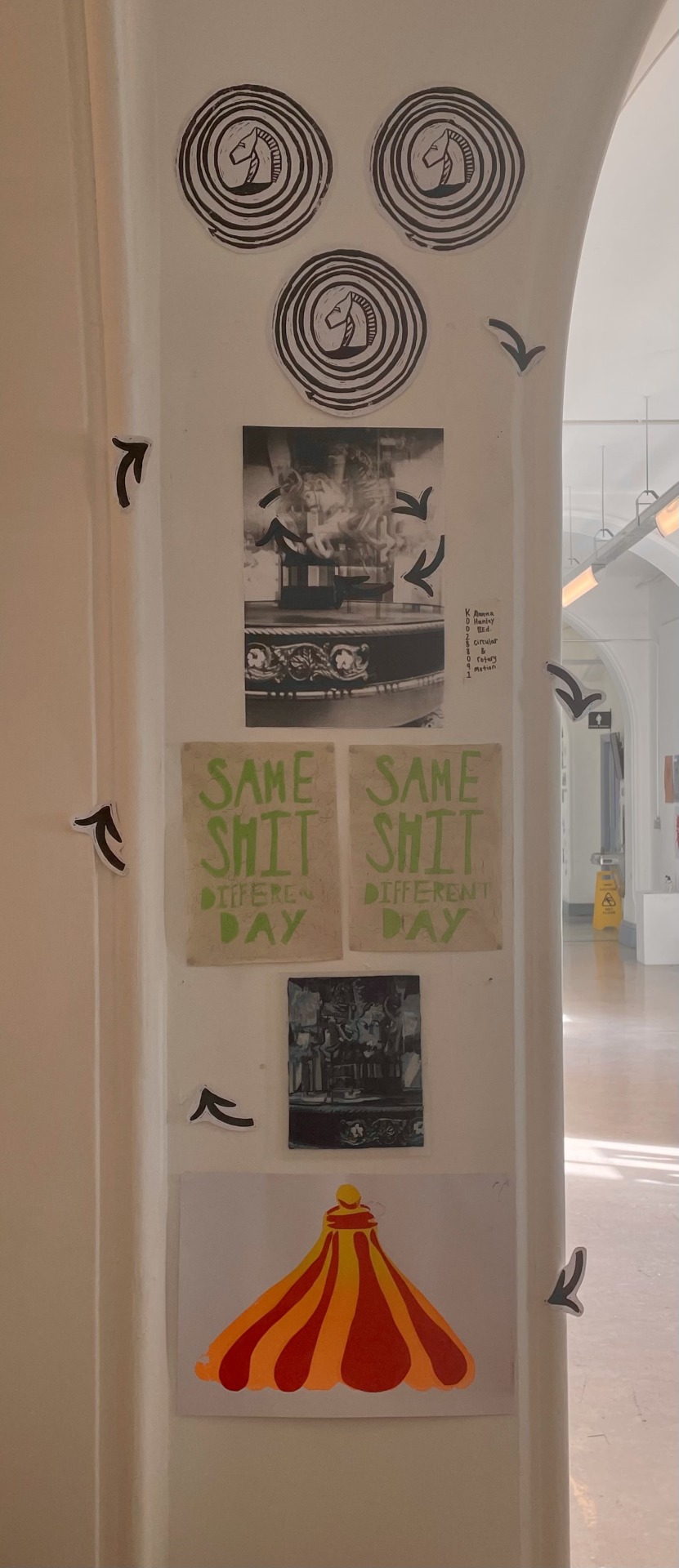
I hope you enjoy following the story of my project. I sure enjoyed creating it.
#print#photography#painting#rotation and circular movements#movement project#artist statement#project statement#discipline electives
4 notes
·
View notes
Text
Exploring Electives - Print W2
As I was unable to go to a workshop on Monday due to attending lectures in UL, I decided to try to do some print work in my free studio time outside of my teaching practice.
Inspired by the work of Cyril E. Power, a Lino cut artist I saw when researching for my Curriculum & Practice assignment, I really wanted to bring his spiralled effect into my own work.

The Merry Go Round, Cyril E. Power (1930)
When deciding on a design for my linocut, I thought back to the screen printing workshop with Fiona, and decided to go with a simple symbol and shapes for an effective print.

I decided to use the head of the horse, seeing as it has been such a prominent figure in my project up until now. I took the reference image for the horse from one of my pinhole photographs.






Process of sketching and cutting the Lino
The design was inspired by the spirals in Power's work, but I also kind of realised I had no literal circular pieces made, so I thought this was a good opportunity to make one.
The horse represents the moving parts of the carousel, how it spins and spins and reaches the arrow that indicates the continuation of that spinning. It sounds a bit aloof, but it makes sense in my head, anyways.
Just like the horse in the carousel, we spin in circles everyday. We wake up and go to school or work, and then we eat and talk and sleep and wake up and do it all over again tomorrow. Our daily routines are circular, falling into a continuing spiral, just like the carousel.




I had excess Lino left over, too, so I just made a simple arrow linocut and added it into some of my pinhole photographs.
I'm so happy to be revisiting print again, I missed the printing process and it was great to get a few more pieces out of it.
#printmaking#block printing#linoprint#movement project#rotation and circular movements#exploring electives
4 notes
·
View notes
Text
Interdisciplinary Work - Painting and Photography


5 notes
·
View notes
Text
Exploring Electives - Monochrome Painting
Following on from the workshop on Monday, and of course the previous artist research I conducted on Pablo Picasso, I decided to try and complete a painting following on from this.

I began to think about what kind of painting I wanted to do, I first considered the gestural painting style we did on Monday, but I didn't really enjoy it.
When I was younger, I used to paint these images on glass sheets. Basically, you attach an image on the back of the glass and paint on top, but it's more about painting in shapes then blending, which reminded me of Monday's workshop and Picasso's cubism work.




At the end, you're left with this really unusual image from building up layers that's actually pretty interesting. I ensured that while painting, I would use similar colours in the photo and through this, similar colours from Picasso's paintings.



The final result isn't as nice as I wanted it to be, plus it's quite uneven in some parts and more messy looking than abstract. The only part I was particularly happy with was the bottom part of the carousel. Also, when I printed the photograph I completely forgot to invert it so it would come out the proper way around!

Anyways, I'm glad I tried it out because I hadn't done a whole lot of painting before this. It was great to bring my photography elective into my painting work.
4 notes
·
View notes
Text
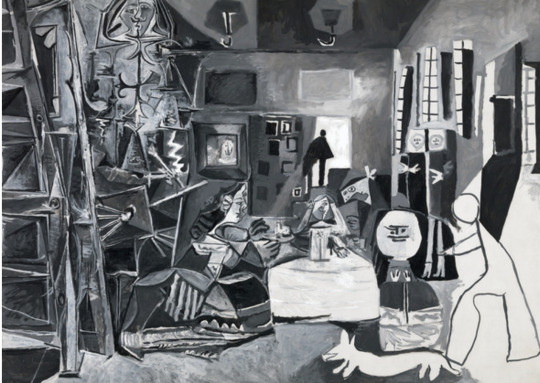

Artist Research - Pablo Picasso
Pablo Picasso is famous for may of his iconic abstract works throughout the years, including his portraiture work.
After my painting workshop with Sylvia on Monday, I began to research different types of monochromatic artists, and came across this particular article.

"Las Meninas (Infanta Margarita María)" (1957).
In this article, I was surprised to find Pablo Picasso as I really only remember him as being someone who used a lot of colour. I came across this particular piece that I found really interesting.
I was really interested in the way Picasso used the different black, whites and greys in this painting as there's such a large contrast between the darks and the lights. For example, the darkness of the left of the painting compared to the nearly all white corner of the right hand side.
I was thinking how the colours in this painting really reminded me of the colours in some of my pinhole photography, so I am going to try paint an abstract-esque piece inspired by the colouring and shapes of this painting.
2 notes
·
View notes
Text

Exploring Electives - Painting W2
A photograph of my final life painting after the workshop I attended on Monday with Sylvia.
We first mixed red, blue and yellow. Then, we split the mixed paint into three different parts and added white to two of them, creating three different tones.
Sylvia talked us through the painting process, it was very therapeutic and really enjoyable. I feel as though I didn't have enough time to finish my painting and I was shocked about how long it takes to do each aspect of the painting.
We used a large, flat head brush that was difficult to paint with, as you get more of an abstract look.
4 notes
·
View notes
Text
Artist Research - Richard Long
When discussing my concept during the tutorial I had on Thursday, I discussed the idea of how I wanted to relate the circular movement of my primary object, the carousel, to the movements we create in everyday life, and everyday simple routine.
When I discovered the carousel during Christmas, I was walking past it going into my kitchen. I would then eat, go about daily tasks and walk past it again on my way to my bed to sleep, and it was still there, spinning. So as I went about my day, it did too, spinning and moving in the same way, just as I was; waking up, eating, brushing my teeth, going to bed - just to do it all over again while it spun, in circles.
On mention of this, I was introduced to the artist Richard Long, CBE. Born in 1945, Long is a sculptor and one of the most famous British land artists.

I visited the the library that afternoon and I found 4 books on Richard Long, but the most interesting was Walking in Circles by Richard Long, a collection of his works where he walked the land in circles in a number of different ways and created art works in them, or based on them.

Long celebrates the everyday ordinary and creates extraordinary things with it. In one project, he walked around in one circle, and throughout it, gaining a feel for the outdoors, surrounding himself in it in order to create. His routine of going around and around in a way that many would find boring, is made into something beautiful and meaningful.


8 notes
·
View notes
Text
Artist Research - Günther Förg
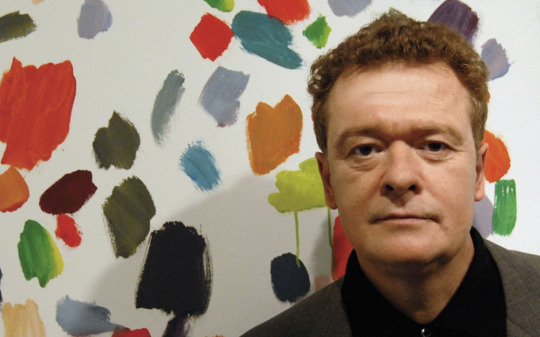
(Link to gallery I looked at online)
Günther Förg was a German artist from Allgaü, Germany. Throughout his work, he heavily rejected the idea of modernism, which was big in Germany during the 1980s. He had a keen interest in fragmentation and the political climate of his era in Germany.
He studied in the Academy of Fine Arts in Munich, and focused heavily on abstract and minimalist work throughout his career.
During my tutorial, as I was showing Eoin my sketchbook, he mentioned Förg, as his Spot Paintings (Tupfenbilder), seem very similar to the way I work in my sketchbook when I'm figuring out colour swatches and texture.
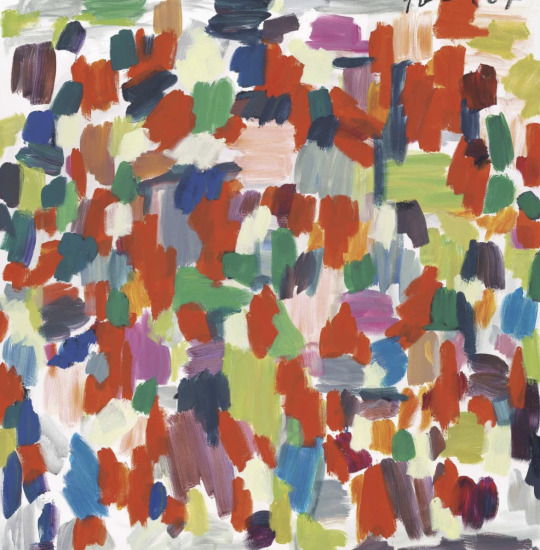
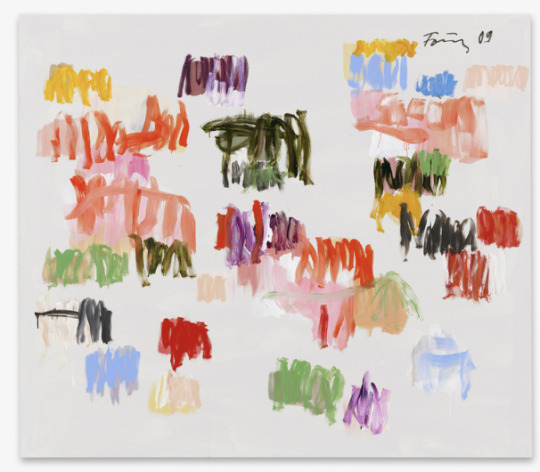
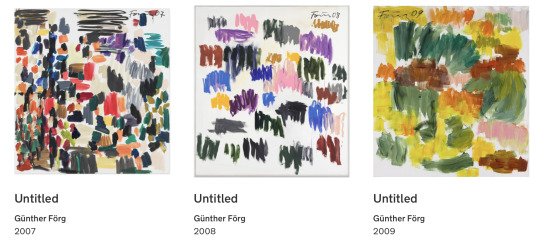
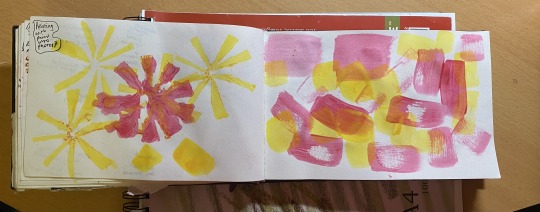
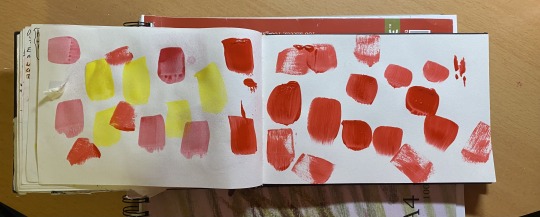
In the article I read, it was written that Förg's paintings were "a full circle arrival at painting as a synthesis of experimentation", I found this really interesting as I think this sentence relates to my project in a way. Of course, I in no way regard myself as as skilled and meticulous as Förg, but it was interesting to find little similarities in our work.
My project is based all around circular rotation and moving in circles, something this artist has done in his spot paintings and something I am trying to achieve in experimentation through the different electives. I hope my work reflects this idea of coming full circle through the interdisciplinary effort to combine paint, print and photography in these sketchbook pages.
His spot paintings, as shown above some of my sketchbook pages, were deeply inspired by seeing Francis Bacon's studio, as Bacon would work out the value of colour by dabbing pigment from his brush to paper and cloth.
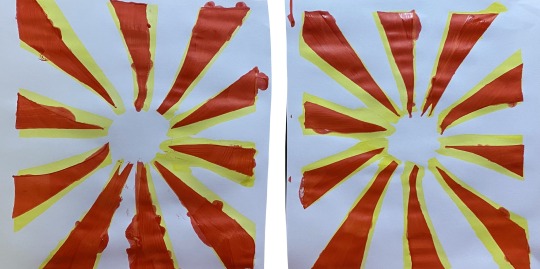
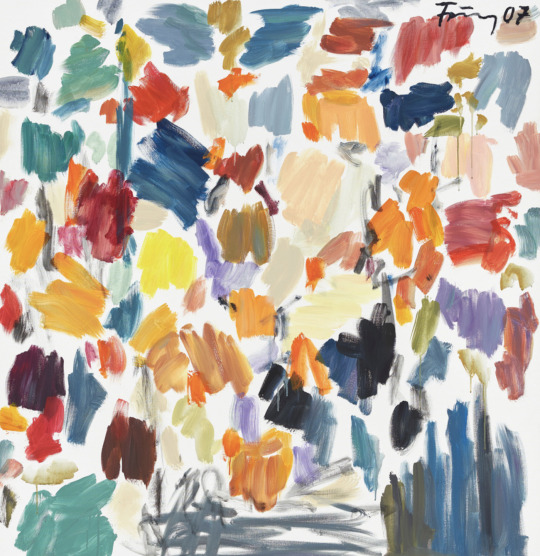
Förg is a fabulous painter, and a true testament to how abstract and minimalist art is not as simple as it may seem on the surface.
#artist research#günther förg#spotpaintings#movement project#rotation and circular movements#painting#photography#print
5 notes
·
View notes
Text
Group Tutorial - Thursday February 9th
Following up from my life painting workshop with Eoin on Tuesday, I attended a tutorial in a group setting with Eoin and a few of the people who had participated in the workshop.
It was a small group of people, so it was really great to talk about our projects in a more intimate setting. I was feeling a bit stuck with my idea and feeling as though it was a bit boring so it was great to chat to Eoin and the group to gain a bit of inspiration and some reassurance.
I was given a few artists to research, and told to have a look back at my pinhole photographs and see what else I can do with them. From talking about my project, the pinhole camera photos are definitely my favourite thing I did so I'm looking forward to bringing them in to the painting elective.

Below are just a few notes I took during the tutorial into my sketchbook.
1 note
·
View note
Text







Exploring Electives - Painting W1
This week, I began the painting elective. On Monday, I attended the life drawing workshop with Eoin.
In this workshop we drew a nude model, using charcoal only to create gesture drawings. We drew the figure for different sets of times. 30 seconds, 5 minutes and 10 minutes.
Drawing is not really my strongest skill but I enjoyed how free this workshop made me feel, as it was more about getting the information down then fine details.
4 notes
·
View notes
Text
Artist Research - Nancy Breslin
I was lucky enough to come across Nancy Breslin watching a quick video on an introduction to pinhole camera photography.
vimeo
Nancy is from Washington, D.C., and works primarily with pinhole and plastic cameras.

I visited her website, https://www.nancybreslin.com/bio.html , to find out more, as I saw her work with amusement parks and wanted to see if there was anything else that she had taken that related to my project.

Her work with taking photos of carousels is so interesting and intricate. In the top middle photo the spinning of the wheel almost looks like a spinning top. The skill and detail that went into that piece must have been massive!
Her attention to detail in nothing short of magnificent. Seeing her work and her interest in the spinning objects inspires me to keep working with my subject matter.
Pinhole photography is such an interesting process to work with, and Breslin's pieces are a testament to how beautiful the images produced can be.
5 notes
·
View notes
Text
Exploring Electives - Photography W2
Seeing as I missed last Thursday's continuation on with the pinhole cameras, I decided to visit it today. It reminded me of how much I loved working in the dark room that first week in comparison to just working digitally.
I talked a little about my project with Gemma and she suggested using this type of pinhole camera. She introduced me to the Pinhole Meter App that measures how long you should expose the pinhole for.

I looked for places around the college I could plug my carousel into to get a revolving image, however, I couldn't seem to find one. Gemma and Bob helped me come up with a great solution. Bob gave me the lend of a long extension lead to bring the carousel outside, this gave me an exposure estimate of around 30 minutes.

I turned on the carousel at the 15 minute mark. This is the result, inverted and edited by playing around with levels. I'm very happy with the results and am extremely grateful to my tutors for the great conversation we had regarding how I would use photography to properly portray what I wanted to.


As I was waiting for the 30 minutes to pass, I did some quick shots with the normal pinhole camera we made in the workshop on Monday. These are the results, inverted and levels played around with.



After the thirty minutes, I decided to try another 30 minute exposure, but it started raining and the extension cord had to be taken in from outside. It's not spinning as I would have liked, but I still think it's a cool image that I can use.
In conclusion, I really enjoyed the photography elective and found the workshops really helpful and fun!
3 notes
·
View notes
Text

Experimenting with Different Processes - Post 2


These are the paint prints I created using the stencils and a large No.10 hog head brush. They don't come out as clean or as graphic in screen printing, but the bleed of the paint was a happy accident as I feel it added to the final photographs.


On the left is the photo I took originally with the fast shutter speed. On the right is a photo, using the same settings, but not a photo of a 3D object, but a 2D image.
The second image captures circular movement just as similarly as the first image, so although it definitely doesn't look the same, it has similar attributes and the desired effect I wanted.
I also had a lot of fun! Which I am trying to do a lot more this semester.


4 notes
·
View notes
Text
Experiments with Different Processes
Print, Painting & Photography
This week I am focusing mainly on my second week of exploring photography. However, I was thinking back to the workshop I had with Fiona on week 1, the screen printing one, and I decided to try a few things out just to see of they would be successful at all!
I was looking at the photos I took yesterday, and I decided to try and recreate it using a similar process to the screen printing I did. This was when I was in my accommodation so I only had access to paint, so I decided to use that in place of ink.









I will follow on this post with the contrasts between the original image and the one I've created using the paint prints.
This was a really fun experiment and it was great to use all 3 of my disciplines in one project.
2 notes
·
View notes
Text
Photography - Shutter Speeds


Today, after the workshop was over, I no longer had access to the DSLR camera, but I wanted to take a few pictures playing around with shutter speed and the carousel to try and capture the circular movements through a simple 2D image.
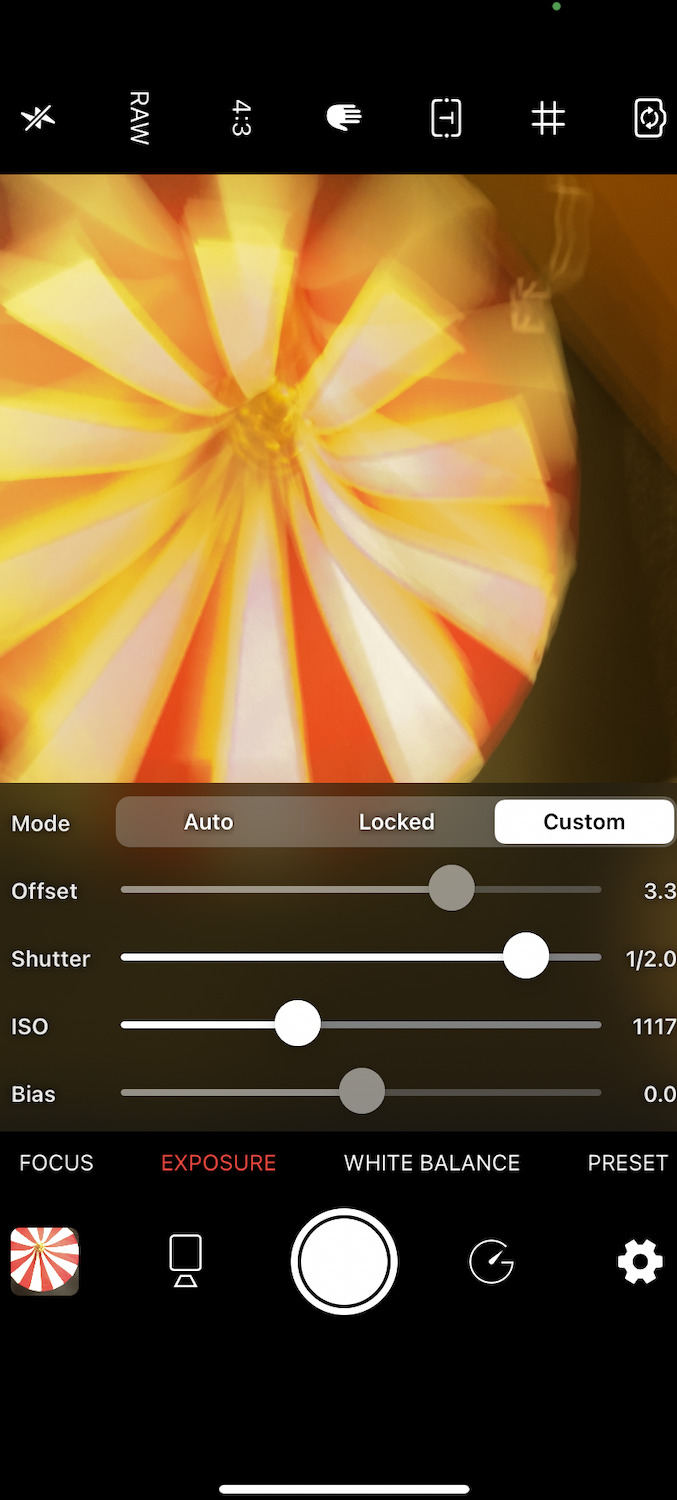
So, I used the Yamara App. It's essentially an app on your phone that turns your phone lens into a DSLR camera. You can adjust the shutter speed, the ISO and the aperture just like in the cameras.
I took a few images of the top of the carousel, moving my phone in a circle to create that sort of spinning feeling.
I then brought the photos into the editor on my laptop and played around with the sharpness, colour and lighting.

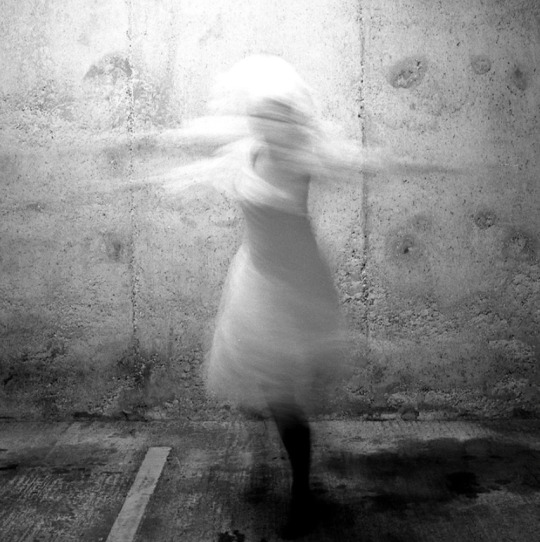
I used a black and white filter on one of the images to create something similar to one of my favourite photos taken by Francesca Woodman.
The image constantly spins, stuck in a moment of time.
6 notes
·
View notes
Text
Artist Research - Francesca Woodman

Francesca Woodman was an American photographer best known for her black and white pictures featuring herself or female models.
During the workshop I attended this morning, Deborah showed us a number of different artists, but Francesca really stood out to me.

I really loved her use of a quick shutter speed. I think it's a perfect depiction of movement in her work.
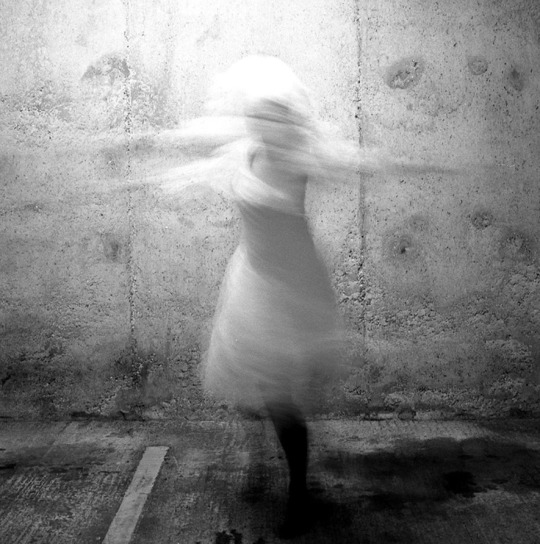

I really want to take influence from her work in using the fast shutter speeds to depict the circular rotation in the old carousel I have.
4 notes
·
View notes